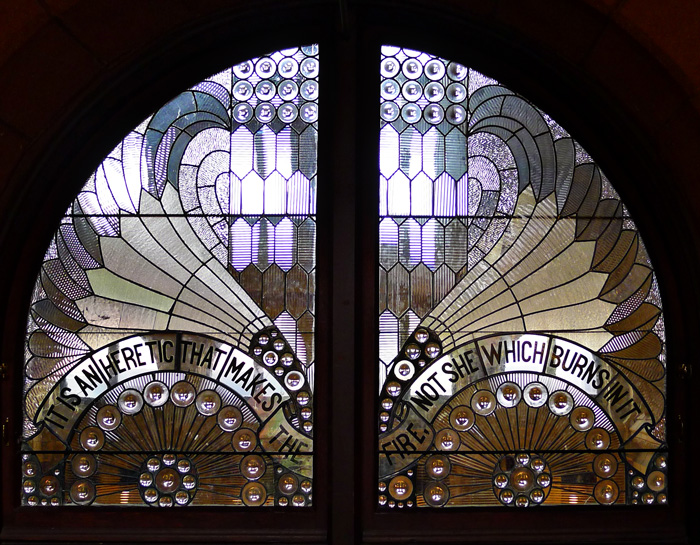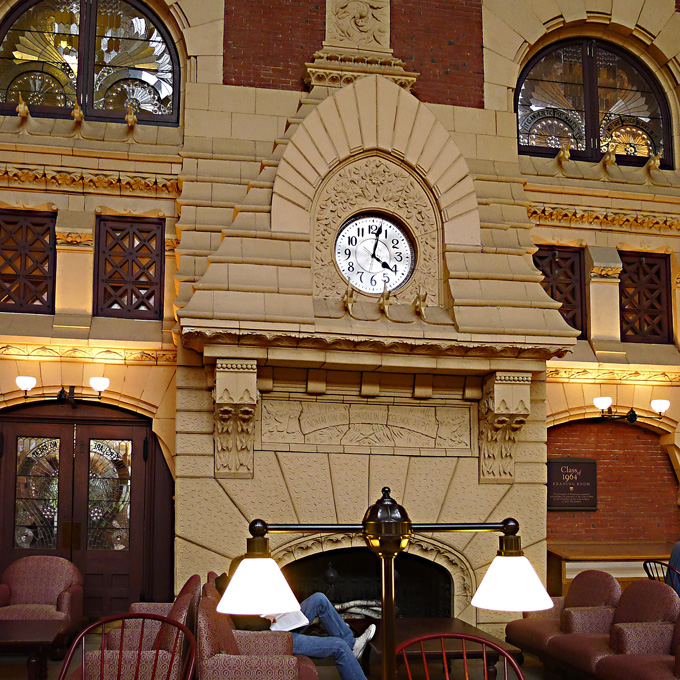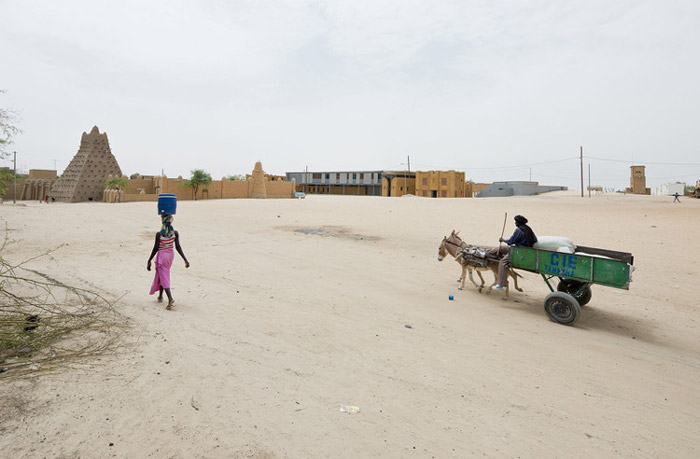Hole in the Clouds
Feb 4, 2010

William Randolph Heart's San Simeon palace in California included two private libraries for the newspaper tycoon and his guests. Accounts of life at San Simeon suggest that the amount of time set aside for reading was not always substantial. But this is the smaller of the two reading rooms.
The craftsmanship of the room, including the ceiling, is phenomenal; click on the photo to see it in detail.
high dynamic range
William Randolph Hearst
library
(Image credit: Trey Ratcliffe)
Nov 11, 2011
 One of the leaded glass windows in the University of Pennsylvania's original library building, now the Fisher Fine Arts Library.
One of the leaded glass windows in the University of Pennsylvania's original library building, now the Fisher Fine Arts Library.
Frank Furness designed the red-brick library, with its massive fireplaces and heavy iron fixtures, in 1888; Frank's older brother Horace, a Shakespearean scholar, selected the window mottoes and other inscriptions. In sharp contrast with the popular architecture of the day, which featured classical motifs and marble columns, Furness's iron-and-brick structure seemed to take its inspiration from Philadelphia's foundries and factories. People hated it, and he was fired from his post as campus architect. Furness's successors designed the neo-gothic buildings that came to characterize the University of Pennsylvania campus through the twentieth century.

Philadelphia
library
Shakespeare
Fisher Fine Art Library
University of Pennsylvania
Frank Furness
stained glass window
Nov 10, 2012
 The new library building of the Ahmed Baba Institute in Timbuktu, designed by South African architect Andre Spies, sits at the edge of the Sahara Desert– for all intents and purposes at the edge of the world.
The new library building of the Ahmed Baba Institute in Timbuktu, designed by South African architect Andre Spies, sits at the edge of the Sahara Desert– for all intents and purposes at the edge of the world.
Timbuktu has always been miles from nowhere, and the sands of the Saharan nowhere are now blowing through its streets. Years of desertification have spread the Sahara southward, through Timbuktu and beyond across much of Mali and surrounding parts of West Africa.
The Institute was built in part as an archive to preserve ancient documents and religious texts, many of which had survived to the present day by being buried out in the desert. Its architecture was intended to echo the vernacular style, in which most buildings are constructed of mud, with thick, fortress-like walls. Needless to say, many Malians criticize the design as far too modern.
desert
library
Mali
Timbuktu
Sahara
(Image credit: Iwan Baan)



 The new library building of the Ahmed Baba Institute in Timbuktu, designed by South African architect Andre Spies, sits at the edge of the Sahara Desert– for all intents and purposes at the edge of the world.
The new library building of the Ahmed Baba Institute in Timbuktu, designed by South African architect Andre Spies, sits at the edge of the Sahara Desert– for all intents and purposes at the edge of the world.